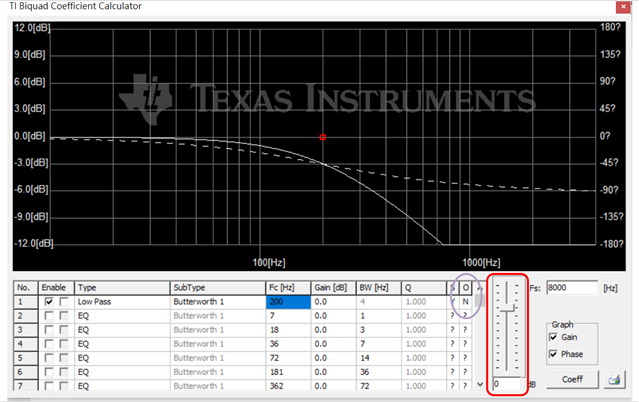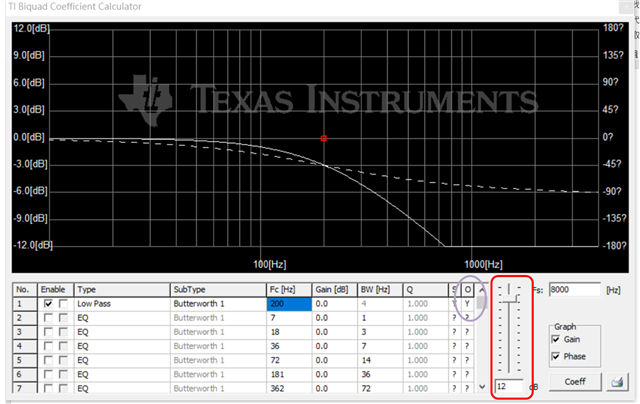Hi
Regarding the overflow flag for TI biquad coefficient calculator.
The following figure show the overflow flag set to N when the scale bar is set to 0dB.

If we increase the scale bar to 12dB, the overflow flag will change to Y, you could see the following figure:

We would like to use the Biquad filter to ADC, could you help to check / confirm what is the scale bar?
Is it related to ADC input amplitude level or ADC PGA gain(P0_R83_R84 ) ?
Thanks.
BR
Trevor

